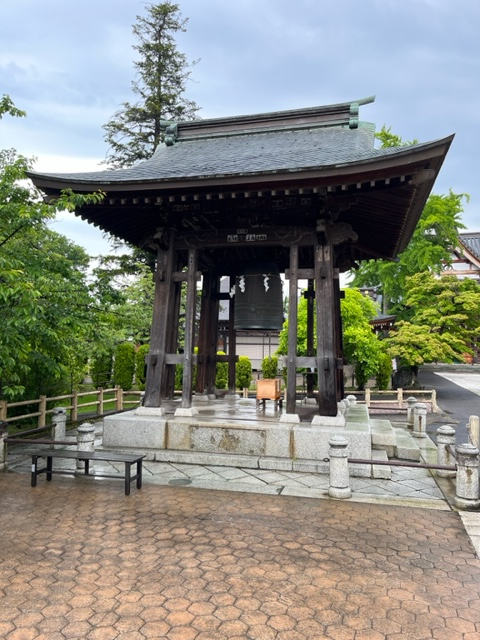
letters-home-japanese-religious-traditions
Often times, people back home are very interested to learn about religion in Japan. While religion doesn’t seem to play an important part in most Japanese people’s daily lives, like religion often does in other countries, culturally it is an important aspect of Japanese people’s lives when it is viewed as a tradition or custom. The two most prevalent religions in Japan are Shintoism and Buddhism.
It is fair to say that the two religions of Shintoism and Buddhism, in many respects, coexist harmoniously in Japan and even serve to complement each other for the most part. If you ask a Japanese what religion he or she follows, you will likely be told “both.” But few Japanese people consider themselves to be “religious” in the same manner and context that Western Christians do, for example. Culturally, both religions play prominent roles in Japanese daily life with certain traditions of each being followed for different events (like festivals) or traditions (like wedding and funeral-related customs).
An example is how most Japanese have a Shinto wedding, but a Buddhist funeral. Every year, on New Year’s Eve, hordes of Japanese people crowd into their local Shinto shrines to pray for good health and prosperity in the new year, but during the summer’s O-Bon season, these same Japanese people will attend to their ancestral graves and follow Buddhist traditions. People who consider themselves to be Shintoists is just over 80% of the population and Buddhists are just over 90%, which indicates people claim both religions. Japanese Christians are only 1.5% of the population.
Japanese maple trees often are placed on the grounds of Buddhist temples in Japan because they signify calmness, restfulness, and peacefulness.
It can be stated that Buddhism is based primarily on a concept that emphasizes the idea of transcendence of one’s soul within the cosmos, which also includes human suffering, while Shintoism focuses more upon the concept of adaptation to life’s practical and realistic needs and desires through a polytheistic approach with the worship of many deities called “kami.”
The origins of Buddhism are well-known and documented, but Shintoism’s origins are much more ambiguous and is indigenous by nature. Buddhism originated in India in the 5th or 6th century BCE, spread to China, then eventually came to the shores of Japan. Shintoism, in contrast, is an ancient, animistic religion in that every living thing and even inanimate objects, like stones, possess spirits. Nature is revered and considered sacred, as well.
Buddhism isn’t considered to be a theistic religion and humans who reach Nirvana — enlightenment — are venerated. Another difference is how Buddhism subscribes to a clear doctrine and rules. Probably most people are most familiar with Zen Buddhism, but there are a number of other Buddhist sects within the religion and they all follow certain dogma and truths that are universal to Buddhism. Similar to Christianity in that many denominations encompass the religion, with small differences separating them, but the core beliefs tend to be the same.
Five storied pagodas are often found on the grounds of Buddhist temples and each story symbolizes the elements of earth, water, fire, wind, and the void, which when combined represent the entire universe.
Shintoism, on the other hand, is more ambiguous in that there are no prescribed religious texts or set doctrine for the most part and as a polytheistic religion, it allows more flexibility and freedom of its adherents to worship “kami” or deities of their choosing. Shinto (which means the ‘way of the gods’) is as old as Japanese culture and is the endemic religion of Japan.
A small neighborhood Shinto shrine near the author's home where neighbors gather on New Year's Eve to pray for the next year.
Perhaps it is difficult for outsiders to understand how Japanese people can be adherents of two different religions at the same time, but it is very natural and so easy to glide from one religion to the other depending upon the occasion or event in Japan. This amalgamation of Shintoism and Buddhism occurred when Buddhism was initially introduced to Japan from China. This blending of the two religions gradually occurred over time, and today, it is just an aspect of Japanese people’s religious lives.
Prayer is quite ritualized in the Shinto religion. For example, when people pray at a Shinto Shrine, they first throw a coin into the offering box, and if there is a bell or gong, they ring it a couple of times in order to get the attention of the kami (gods), then they bow deeply two times, clap their hands two times, and then bow again after offering their prayer. This ritual is done universally by everyone who prays at a Shinto shrine.
Shelbyville native, Dawn Staker Hartman (left), and Shingo Ono making an incense offering at a Buddhist temple in Fukuoka, Japan. Burining incense before entering a temple is a way to purify oneself and the area around you, as a way to sanctify the space while remaining mindful and aware of the sacredness of the place and act of praying.
There are around 13 schools of Buddhism in Japan, with about 80,000 temples, with some 150,000 Buddhist priests. There are also several colleges and universities devoted to Buddhist studies in Japan. Since Buddhism does not worship a god or gods, its main principles are centered around karma, rebirth, and the impermanence of everything in this world. Even though life is full of suffering, this suffering can be overcome by attaining enlightenment like Siddhartha Guatama — the Buddha -- did.
Japanese Buddhists tend to silently pray or contemplate the images before them in temples while bowing and praying silently to them, while making offerings to the temple or monks in attendance. Since Buddhists do not believe in a specific deity or God, they do believe in a variety of supernatural figures that are believed to help or hinder one’s ability to attain enlightenment, which is the ultimate goal.
Otomi Jinja (Otomi Shrine) in Oita Prefecture, Kyushu.
The teachings of Buddha emphasize honesty, kindness, understanding, patience, forgiveness, generosity, loyalty, and respect for one’s elders … all excellent qualities for anyone or any religion to try to follow!
Main photo: A Bonshou bell at a Buddhist temple in Hirosaki, Aomori. Ringing bells at Buddhist temples serve to get people's attention, but also as a reminder of the power of compassion in the world and the potential for personal liberation from earthly bonds. These bells are rang ritualistically at midnight on New Year's Eve.





